IT’S ROBERT PLANT WEEK ON TBL LEADING UP TO THE RELEASE OF CARRY FIRE : DAY 2 – TBL ROBERT PLANT ARCHIVE – SIXTY SIX TO TIMBUKTU REVIEW/PLUS LED ZEPPELIN LIVE AT OLYMPIA PARIS OCTOBER 10 1969 – IT WAS 48 YEARS AGO TODAY
TBL Countdown to the new Robert Plant album 3 days to go and counting….so it’s Robert Plant week on TBL..
To celebrate the release Robert Plant’s forthcoming album Carry Fire this Friday, over the next few days leading up to the release date, it’s Robert Plant week on TBL – with daily archive postings.
Today I look back to the 2003 Robert Plant compilation set Sixty Six To Timbuktu.
PLANT 66 TO TIMBUKTU RETRO PROVES THERE IS LIFE BEFORE AND AFTER ZEPPELIN…
Given his vast achievements within Led Zeppelin, it’s easy to forget that Robert Plant has enjoyed a solo career that has spanned twice the time he spent in the company of Page and co.
The release of Sixty Six To Timbuktu, a 35 track retrospective 2 CD overview of his entire solo career redresses the balance. As the title suggests, it covers his pre Zep work from with his first record issued in 1966 through to his most recent endeavour – a trip to Timbuktu to participate in the Festival In The Desert event early this year.
The set is neatly split with CD 1 presenting an overview of his post Zeppelin output circa 1983 – 2003 and CD 2 honing in on his pre Zep work alongside various cameos, unreleased tracks, one off projects and rare B sides from the past two decades.
As Plant explains in the extensive self penned sleeve notes this is more than a mere best of. ”Avoiding a best of format which generally relates to chart success was essential and I have tried to mix up ’80’s techno sounds with the more organic pieces which were developed from 1983 onwards”
CD1’s 16 tracks are presented with no regard for chronological sequence. The material covers seven of his solo albums surprisingly ignoring anything from his 1982 debut Pictures At Eleven. 1993’s Fate Of Nations is represented by five selections including the Tim Hardin cover If I Were A Carpenter and the radio hit 29 Palms.
Looking over the credits, one could be forgiven for thinking that Plant’s main forte is as an interpreter of other artists songs – nearly half of the tracks are cover versions of one sort or another . That though would be to undermind the eclectic songwriting creativity that has coloured his post Zep albums. From the West Coast funk riff freakout Tie Dye On The Highway through the techno rockerbilly of Tall Cool One, smooth radio friendly anthems 29 Palms and Big Log to hard edged Zeppelinesque rockers like Calling To You, Plant has constantly challenged himself and his audience.
By his own admission Plant found the selection process for the album quite difficult – I find it somewhat baffling though that he has ignored his watershed debut set Pictures At Eleven. For me the likes of Pledge Pin and Slow Dancer remain important cornerstones in his quest to revitalise himself after the retirement of Zep.
Those omissions apart, CD1 is a timely and enjoyable romp amongst the compost of Plant’s varied musical tastes. Ship Of Fools remains as good a light and shade ballad as anything he came up with in that cottage in Wales, Promised Land carries the bluesy strut that has always characterised his best work, Heaven Knows recalls his brief foray into verse-chorus pop sensibility while the cover of Phil Phillips and the Twilights 50’s do wop smash Sea Of Love (his biggest US solo single success) recorded for The Honeydrippers album in 1994, confirms Plant’s lasting ability to stamp authority and get right into the core of any given song, seduce it’s melody and make it his own.
Rarities on CD1 are the 1988 Now and Zen outtake Upside Down, an alternate take of I Believe and the incessantly brilliant Dirt In A Hole, recorded with his current band Strange Sensation for the Dreamland album but only included on European pressings.
CD2 is pure Plant collectors gold, presenting 19 rare and hard to find tracks including five previously unreleased.
Initially we find the teenage Plant searching out his style. It begins with his first solo single , a mid 60’s surge through The Young Rascals US garage anthem You Better Run credited to one of his early Midlands based groups Listen. The quaint Our Song a CBS solo single in 1967 finds him miscast as the next Tom Jones crooner but already you can hear him developing that unique bend to his voice. His pre Zep outfit The Band Of Joy extracts – cleaned up demos of Hey Joe and For What It’s Worth are real lost treasures. Prime slices of 60’s Brit psych over which the young Plant demonstrates the scope and variety of his striking vocals which would duly lead to Page signing him up when he saw him a playing similar material at a Birmingham collage a year later.
The cameos and one offs shift from pleasing rockerbilly work outs such as a hot Sun Studios delivery of Charlie Rich’s Philadelphia Baby from the Porky’s Revenge soundtrack, a spontaneous psychotic early 90’s take on the Elvis staple Lets Have A Party, a beautifully sung version of Arthur Alexanders’ country tinged If It’s Really Got To Be That Way, through to a sensitive rendering of Skip Spences’ Little Hands which kick started the retro phrase he undertook after curtailing his reunion with Page in 1999.
Finally Win My Train Fare Home recorded in the Mali desert earlier this year and the Afro Celt Sound System collaboration Life Begins Again, both demonstrate his frequent impressive command of merging east and west musical themes.
This welcome retrospective vividly captures the breadth of styles the singer has undertaken and interpreted over the past 37 years. Be it 60’s beat and psych rock,blues and rockerbilly musings, acoustic folk and exotic ethnic trimmings – he does it all with a vocal conviction that ranges from delicate fragility to full on rock power.
Sixty Six To Timbuktu therefore offers long overdue evidence that for Robert Plant, Led Zeppelin has only been half the story.
Dave Lewis October 12 2003
First written for TBL 17 –Copyright Dave Lewis/Tight But Loose
…………………………….
LED ZEPPELIN AT OLYMPIA PARIS OCTOBER 10, 1969 IT WAS 48 YEARS AGO TODAY -TBL ARCHIVE REVIEW
To mark the 48th anniversary of the Led Zeppelin Olympia Paris gig today, here’s my review of the companion disc that features Jimmy’s edit of the show.
Led Zeppelin Led Zeppelin I
The Companion Audio Disc: Live at the Olympia, Paris, October 10th 1969
Good Times Bad Times / Communication Breakdown (4.05)
I Can’t Quit You Baby (6.41)
Heartbreaker (3.49)
Dazed and Confused (15.01)
White Summer / Black Mountain Side (9.19)
You Shook Me (11.55)
Moby Dick (9.21)
How Many More Times (11.14)
The debut Led Zeppelin album was the recorded statement of their first few weeks together. The material selected had been well rehearsed and pre-arranged by the four, one of the primary reasons it took a mere 36 hours to record the album at Olympic Studios, in Barnes, West London.
It’s evident there was very little left over from the album sessions, though back in 1992 Page did salvage Baby Come On Home (aka Tribute To Burt Burns), an outtake from this era that appeared on the Boxed Set 2 compilation. It’s been reported over the years that Zep rehearsed cover versions of The Band’s Chest Fever, Bobby Parker’s Watch Your Step and Elmer Gantry’s Flames but it would appear they were never recorded, as Jimmy has not come up with any alternate versions or outtakes from the first album’s sessions.
Instead he has used the companion disc platform for the first album to present a fully fledged 1969 live on stage recording. There may have been a case for an earlier representation of the band being made available- notably the early Fillmore 1969 appearances (and who knows maybe that situation will be addressed in the future).
However, Jimmy has opted for a later 1969 performance. The source is a radio broadcast of the band’s performance at the Olympia in Paris on October 10th 1969, recorded by Europe 1 radio for the Musicorama programme and part of a short European tour Zep were undertaking during that autumn. A 78 minute edit of the show was first aired on November 2nd 1969. Left to languish in the radio station’s archives for some 38 years, it was re broadcast on December 7th 2007, just three days before the band’s reunion concert at the O2 in London. The recording was subsequently bootlegged, most versions with the French DJ introductions left in and unevenly mixed.
Overall this is a much punchier mix than the bootleg version. To accommodate the formatting , there are some edits and the whole presentation clocks in at just under 70 minutes.
There is no band introduction and much of Robert’s between song chat is edited. As for the actual songs themselves, Good Times Bad Times/Communication Breakdown ,I Can’t Quit You Baby, Dazed And Confused ,White Summer/Black Mountain Side ( missing the ‘wanking dog’ Plant reference !) are relatively uncut from the original broadcast. The previously unheard Moby Dick clocks in at 9.21 – it can assumed that there has been some editing on this as Bonzo’s showpiece of the time was clocking in at around 15 minutes. There’s a slightly unorthodox intro to the piece as Jimmy comes in slightly later with the riff, behind Bonzo’s tympani playing. After the riff comes back in at the end, Bonzo undertakes a final percussive flurry with a boisterous shout and then a 50s riff from Jimmy brings it all to a close.
Heartbreaker is edited to a very compact 3 minutes.49 – during the solo just as the recording goes into that weird echo effect of the radio broadcast. Jimmy avoids that sequence and cuts it straight into the up-tempo solo – it all clocks in at a compact 3 minutes 49.
How Many More Times is scaled down from the 22 minute original performance to 11 minutes 14. There is some chat from Robert prior to the track – it then omits the onstage band member’s introductions during the intro as was custom at the time and cuts straight to the riff.
There’s therefore no room for Aynsley Dunbar reference or the Lemon Song/Boogie Chillun’ sequence featured on the broadcast – however the Oh Rosie/Steal Away (backed by a distinctive Whole Lotta Love riff) and The Hunter is in there – in effect this version is in a similar arrangement to that of its studio counterpart. A final goodbye and namecheck for the players brings proceedings to a close.
The Paris Olympia show vividly demonstrates Led Zeppelin’s progression as a unit during their first year together, in particular the growing confidence of Robert Plant, his shrill vocal attack adds real vitality and spark to the proceedings.
Highlights: The opening Good Times Bad Times/Communication Breakdown salvo with John Bonham doubling up the bass patterns to whip them into shape. The pure blues attack of I Can’t Quite You Baby and You Shook Me – the latter providing a loose framework for a lengthy improvisation –and the How Many More Times finale which carries the listener along on an irresistible adrenalin rush.
After completing another US tour in the fall of 1969, they would go on to revise the act for the opening gigs of 1970. This Paris performance is therefore a welcomed official representation of the band at this point – with a set list still full of Zep I vitality nurtured during the countless gigs they performed that year – and now maturing with the introduction of new material from the about to be released Led Zeppelin II.
This then is an energetic snapshot of the often wild abandonment performances of this era. Whilst the bootlegs serve their purpose, when it comes to the officially sanctioned live album releases (of which How The West Was Won would be a template), I feel there’s a real sense that we are hearing Led Zeppelin as its original founder perceives it. That is reason enough to welcome Led Zeppelin Live at the Olympia 1969 into your homes and onto your deck at the earliest opportunity…
Dave Lewis – May 20th, 2014
…………………………
Look out for another Robert Plant TBL posting tomorrow…
Dave Lewis – October 10, 2017
TBL Website updates compiled by Dave Lewis
with thanks to Gary Foy and James Cook
Follow TBL/DL on Facebook:
https://www.facebook.com/tightbutloose.loose
The TBL/DL Facebook page has regular updates and photos – be sure to check it out.
And follow TBL/DL on Twitter
You Tube Clip:
Robert Plant – Our Song:


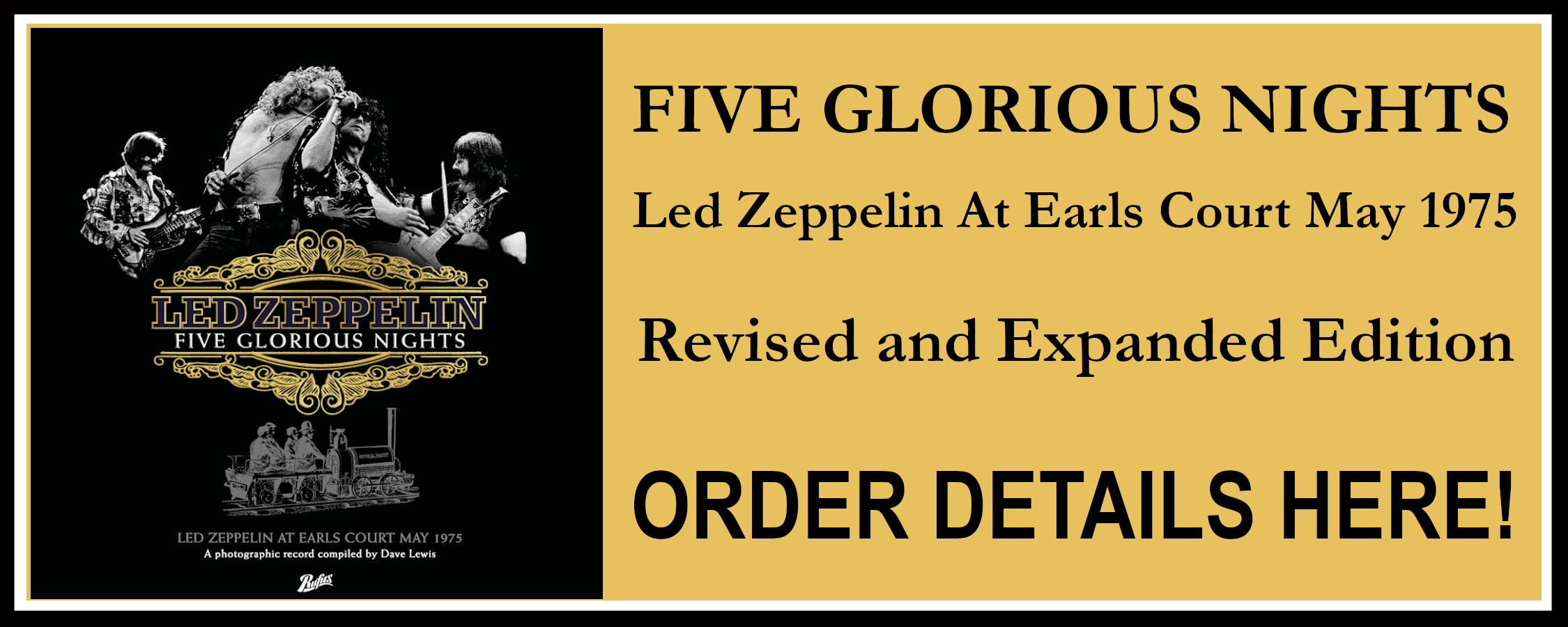


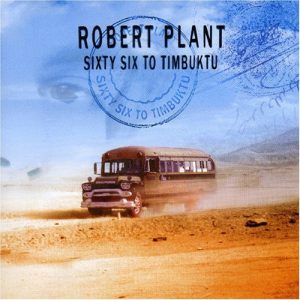
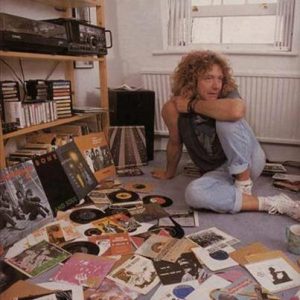
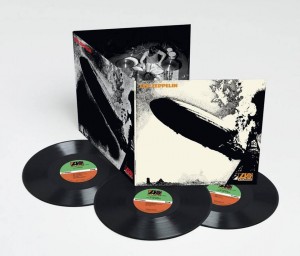
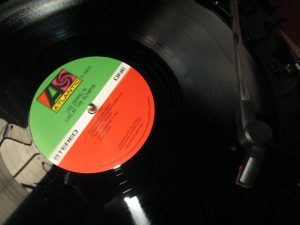









Enjoying the Plant commentaries, Dave. Pictures at Eleven is my second-favorite Plant solo release, trailing only the mighty Fate of Nations (and all its terrific b-sides). Fate is hands down his best solo work in my opinion.
It had obviously been a sad couple of years on the Zep front by 1982, but then we had a bonanza with Death Wish II, Pictures At Eleven and then of course Coda late in the year.
I liked the fact that he was rocking on Pictures, and it seemed at the time like a sort of Zep-lite piece of work, which was (and is) fine by me. Slow Dancer was my personal fave. Burning Down was a great opening track and the accompanying video was a humorous, self-deprecating piece of good fun. Moonlight In Samosa remains one of his most beautiful tracks. I still like the rather manic Mystery Song, and Far Post was a real joy to discover on that old 12-inch single. Still one of his greatest tracks. None of that music would have been possible of course without Robbie Blunt, whose work was truly stellar.
Sixty Six To Timbuktu’s main value was the second disc, even though as a collector I had already previously sought out a large portion of the tracks. It’s interesting to hear but in the end these types of releases almost always wind up being curios in my opinion.
The Paris 69 Zeppelin recording was badly overlooked when it hit the radio airwaves in late 2007, as it was completely swamped by the O2 show. It’s a wonderful listen, although the glaring flaws in the original recording were a bit frustrating. Still an incredibly important document in the Zep catalog however. Jimmy and John Davis did an admirable job putting it into more adequate audio shape for its appearance as the bonus disc for the first album reissue in 2014. A very nice find indeed.
Thanks for the video of the recent BBC gig, looking forward to watching that later this evening when I can sit back with a glass of the old vino and enjoy. You Tube over the TV can be a wonderful thing… 😉
I have a US In The Studio radio show CD in which Robert says he wishes he’d included Slow Dancer on 66 To Timbuktu, but he got carried away with unearthing alternate versions and rarities instead.
October 10th was 1969 was 48 years ago wasn’t it? Not 38…
If it was 38, you’ve given me a decade back!
Leave your response!
TBL Products
About TBL
Tight But Loose Website edited by Dave Lewis and Gary Foy.
Tight But Loose Magazine created by Dave Lewis 1978. TBL/Web launched by Dave Linwood 1995. TBL logo by Mike Warry.
All written material and photographs are copyright © Tight But Loose. Not to be reproduced without prior permission.
Tight But Loose welcomes input / info / tour reports / CD reviews / CDR’s & Tapes on any Zep related topic past and present.
Archives
Recent Posts
Recent Comments
Tags
Views